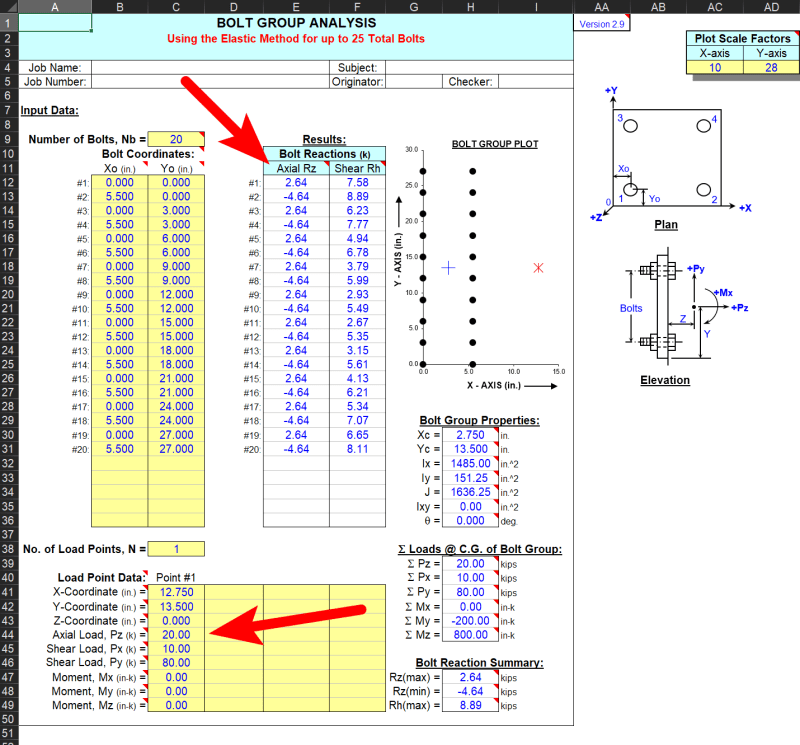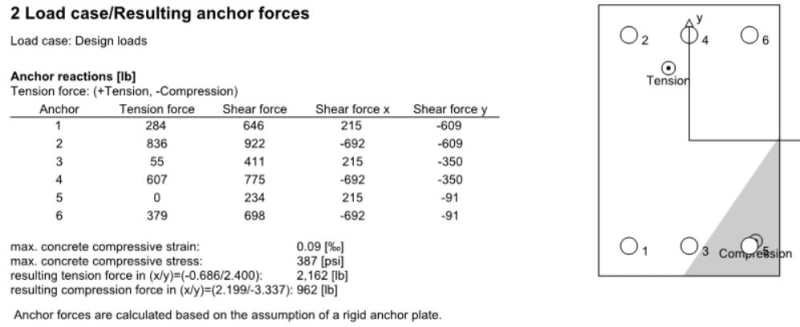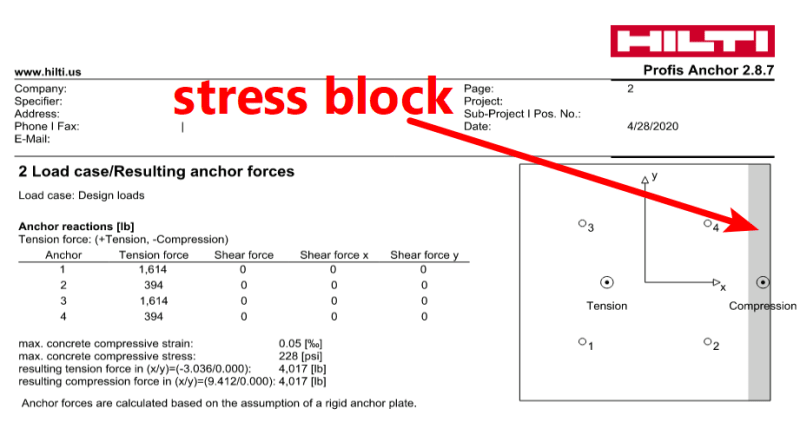Bowsers
Structural
- Nov 19, 2019
- 35
Hello,
I'm doing analysis on an eccentrically loaded bolt group, that is experiencing loads that are both eccentric and out of plane of the faying surface.
Hilti Profis does this analysis, you can apply Mx, My, and Mz, as well as Fx, Fy, Fz from any point.
I've gone through their design guide (where they validate the software's ability to interpret the loads). If would even use it, except my base-mount material is wood, which has a significantly lower E than concrete.
I did manage to find one spreadsheet that does quite a bit of the load generation analysis, but it fails to account for the changing neutral axis location.
Does anyone have a spreadsheet they could share that does this analysis, or an open source hilti alternative that allows for inputting E of wood into the equation?
I'm doing analysis on an eccentrically loaded bolt group, that is experiencing loads that are both eccentric and out of plane of the faying surface.
Hilti Profis does this analysis, you can apply Mx, My, and Mz, as well as Fx, Fy, Fz from any point.
I've gone through their design guide (where they validate the software's ability to interpret the loads). If would even use it, except my base-mount material is wood, which has a significantly lower E than concrete.
I did manage to find one spreadsheet that does quite a bit of the load generation analysis, but it fails to account for the changing neutral axis location.
Does anyone have a spreadsheet they could share that does this analysis, or an open source hilti alternative that allows for inputting E of wood into the equation?



